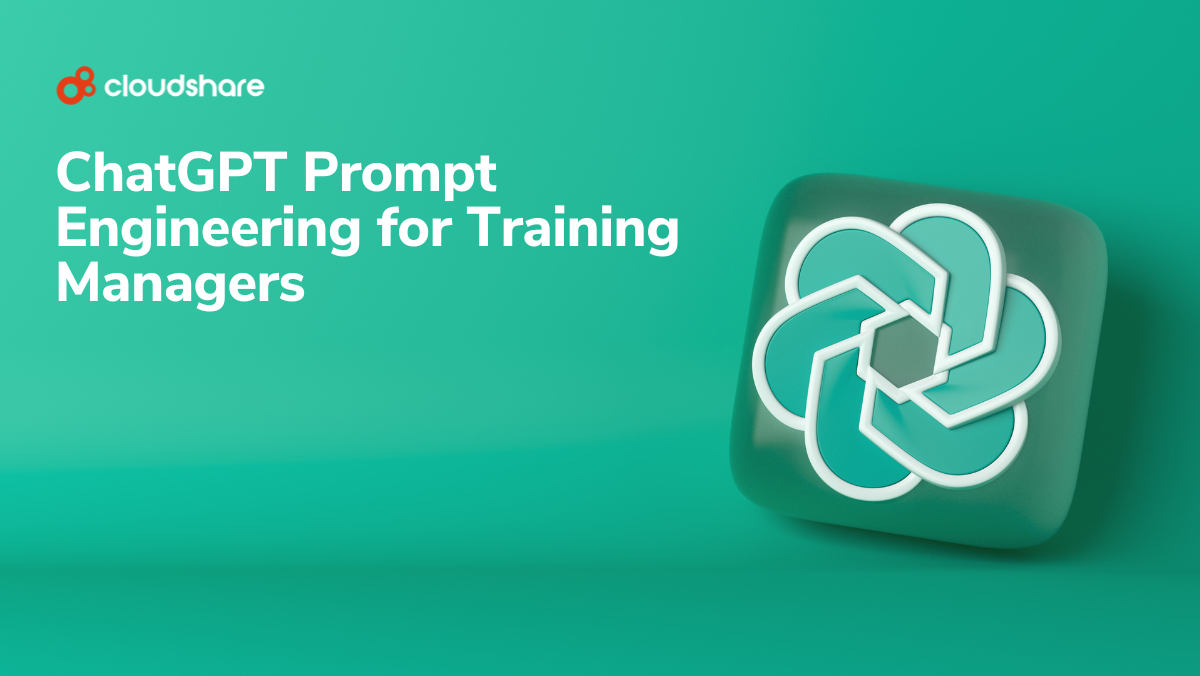
If you want to truly harness the potential of ChatGPT for your training program, there’s one critical skill you’ll need to develop — prompt engineering. Working with ChatGPT isn’t as simple as asking a question or giving a command. There’s a technique to it.
In this short prompt engineering guide, we’ll tell you everything you need to know in order to get started.
The Basics of Prompt Engineering for ChatGPT
ChatGPT is basically a complex language model wearing a chatbot suit. What that means is that while it’s reasonably skilled at responding to conversation in a convincingly human fashion, it doesn’t have much in the way of practical knowledge or skills. It also doesn’t understand context or nuance.
What this means is that the way you phrase your prompt can make an enormous amount of difference in both the quality and accuracy of its responses — see for yourself.
How Prompt Quality Influences Response Quality
Prompt One

Prompt Two

With only a few extra words, we went from a vague and generic response to one that’s more focused, more relevant, and ultimately more valuable.
ChatGPT Prompt Categories
Just as an effective training program begins with a clear objective in mind, a successful ChatGPT prompt begins with an understanding of what you want to accomplish — and more importantly, how ChatGPT will understand your goal. When creating a prompt, you should try to ensure it fits into one of the following categories:
- Informational (“What are the benefits of using ChatGPT for SaaS sales?”)
- Instructional (“Schedule a customer onboarding session for tomorrow at noon.”)
- Contextual (“My SaaS company works in finance, primarily serving SMBs.”)
- Comparative (“What are the benefits of self-paced training compared to instructor-led training?”)
- Open-Ended (“How might artificial intelligence impact customer onboarding in the SaaS market?”)
- Reflective (“How can my company improve its onboarding processes?”)
What is a ChatGPT System Prompt?
Primarily intended for use by developers, a system prompt is a unique type of command that can be input to change how ChatGPT behaves. To use a system prompt within the ChatGPT UI, first enter [SYSTEM] into the chatbox. From there, you can choose from a wide variety of predefined prompts.
ChatGPT does not currently support custom system prompts.
What to Consider When Engineering a Prompt
When engineering your prompts, you’ll want to account for:
- How much ChatGPT “knows” about the topic.
- Your intent in writing the prompt, and how you will express that intent.
- Clarity — the more explicit you can make your prompt, the better.
- Contextual details such as industry, use case, etc.
- Unacceptable or undesirable outputs.
The Anatomy of an Effective Prompt
Before we dive into the prompts engineering process, let’s briefly go over the characteristics of a good ChatGPT prompt:
- Unambiguous and straightforward.
- As concise as possible.
- Contextualized with details about your organization and specific use case.
- A clearly-defined expected outcome.
- The role ChatGPT will assume/the perspective from which it will respond.
A Step-by-Step Process for ChatGPT Prompts
- Define the basic task you want ChatGPT to accomplish.
- Add context to help ensure ChatGPT provides as accurate an output as possible. This might include:
- Factual information about your business.
- Your primary business objective.
- Your values, brand identity, mission statement, et-cetera.
- Demographic data about your audience.
- Information about your audience’s needs or requirements.
- Details about your products and/or services.
- Optionally, provide the context from step two as a separate prompt. Provided you don’t close the chat window and the conversation doesn’t go on for too long, ChatGPT should remember what you tell it and contextualize accordingly.
- Create a prompt that’s as concise as possible while also providing ChatGPT with the necessary context.
- If your prompt doesn’t achieve the desired output, revise it and try again.
Additional Best Practices for Prompt Engineering
We’ll wrap up with some advice to help you along as you engineer and test different prompts and styles.
- If ChatGPT isn’t giving you the answer you want, consider rephrasing your prompt to be a bit more open-ended so it has some room to explore.
- Always remember that the more context you’re able to provide, the better. It may be worthwhile to put together a few pre-written contextual prompts that you can use to prime ChatGPT before each chat session.
- Persistence is key. You may have to iterate and adjust the same prompt multiple times before ChatGPT can provide a suitable reply.
- Remember that ChatGPT does not have any professional knowledge of your field or direct knowledge of your business. You will need to provide it with some degree of guidance in your prompts.
- Understand that although it is sophisticated, ChatGPT still has many limitations. There are many things it cannot do, such as:
- Differentiate between fact and fiction.
- Understand sarcasm or humor.
- Create its own original ideas, thoughts, or concepts.
- Understand emotion.
- Understand the concept of morality beyond the guardrails installed by OpenAI.
Engineering the Right Prompts for the Job
Working with ChatGPT might not be as simple as typing a few commands, but it’s not all that complicated, either. With a bit of practice, you’ll be able to create prompts like a pro. All you’ll need then is the right training solution — and that’s where CloudShare comes in.
Book a demo with us today, and we’ll show you what that means.




